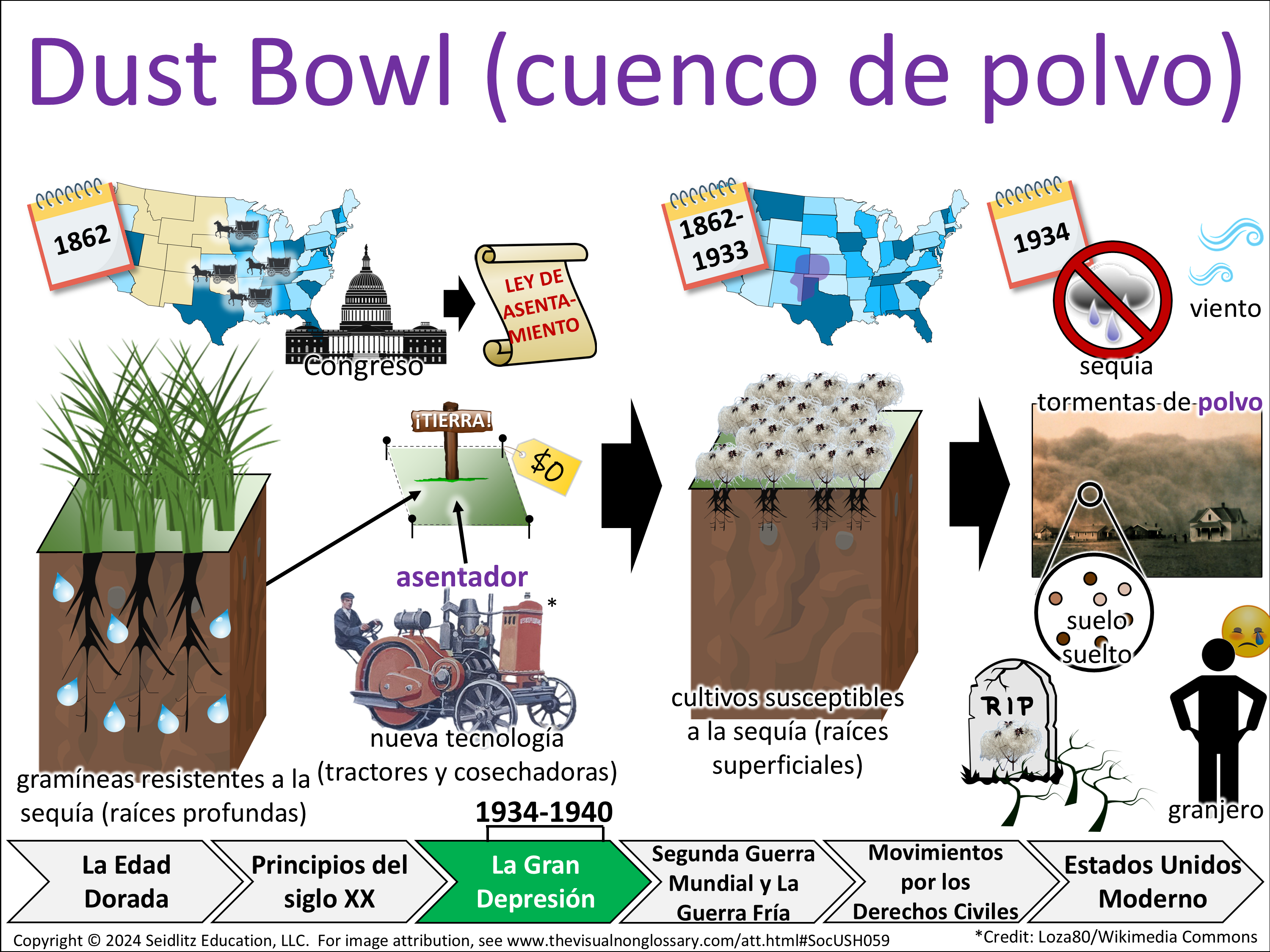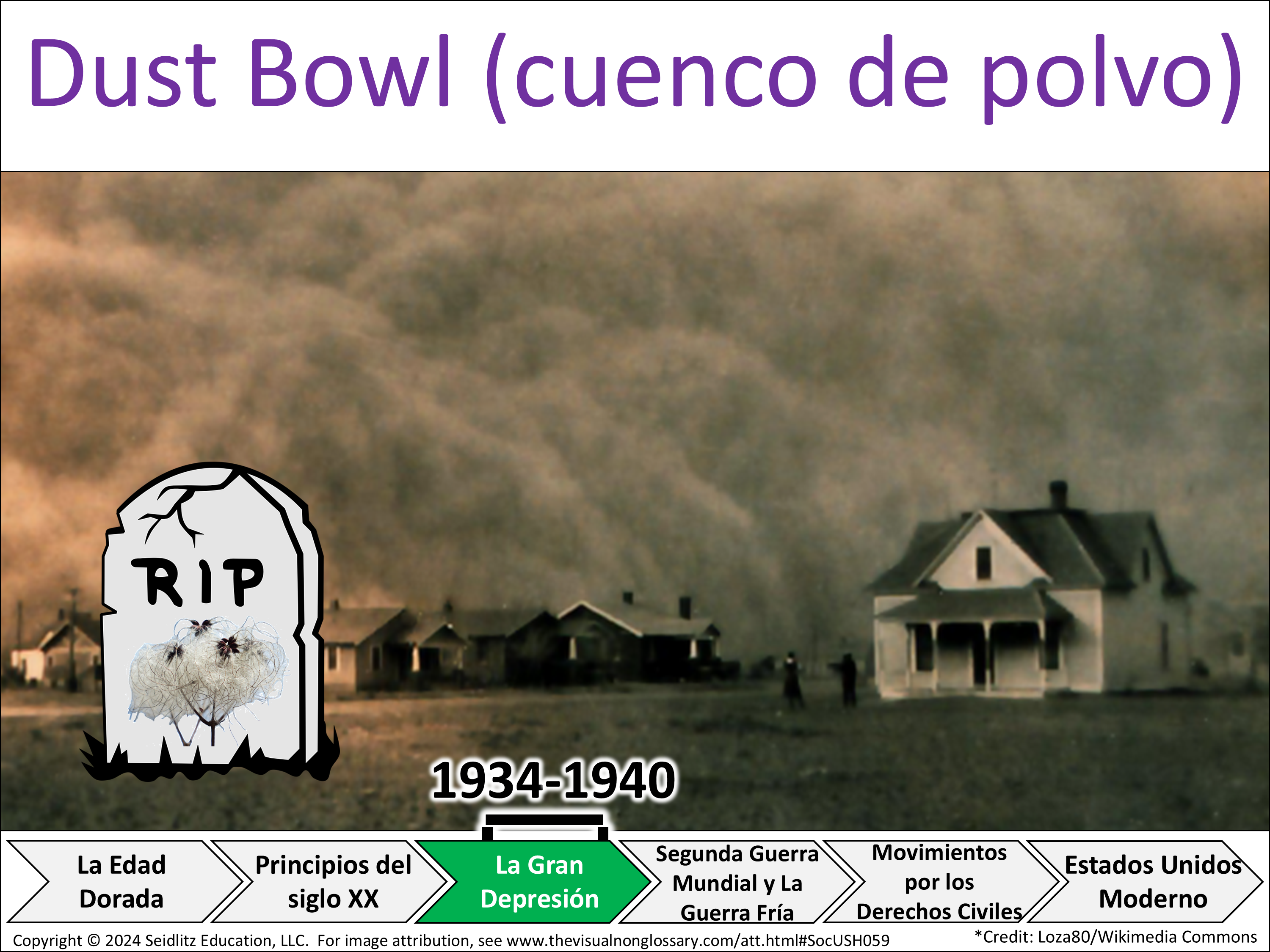Dust Bowl (cuenco de polvo): Historia de EE. UU. 1877-presente (EOC) 🌐 View in English
History
20th-Century Texas
Vertical Alignment
TEKS:
| 4th | 4.5(A) |
| 7th | 7.8(C), 7.9(A), 7.9(B) |
| USH | US.12(A), US.14(A), US.16(C) |
Linked To
Downloads
- Visual
- Word wall visual
- Lesson Plan
- Lesson Materials
Structured Conversation Questions
Observational
¿Qué ocurrió durante el Dust Bowl?
Durante el Dust Bowl,...Relational
¿Cómo estaba relacionado el Dust Bowl con los granjeros?
El Dust Bowl estaba relacionado con los granjeros porque...Inferential
¿Cómo crees que los agricultores respondieron al Dust Bowl?
Yo creo que los agricultores respondieron al Dust Bowl al...
Please log in to comment.
Students might notice in this visual:
- En 1862, el Congreso aprobó la Ley de Asentamiento.
- Esta ley les dio tierra a los asentadores que tenía gramíneas resistentes a la sequía.
- Desde 1862 hasta 1933, los asentadores sembraron cultivos con raíces poco profundas.
- En 1934, hubo sequía y viento, lo que dejó el suelo suelto.
- Durante las tormentas de polvo, los cultivos dejaron de crecer y los agricultores quedaron sin ingresos.
EXTENDING THE DISCUSSION
After the observational question, randomly call on one or more students to share what they or their partner answered. Then ask the class, “Did anyone notice…?” using the suggestions above or anything else you’ve noticed.
After the observational question, randomly call on one or more students to share what they or their partner answered. Then ask the class, “Did anyone notice…?” using the suggestions above or anything else you’ve noticed.
Students might wonder:
- ¿Qué causó tanto polvo en el aire?
- ¿Por qué la gente dejó sus hogares?
- ¿Qué pasó con las granjas en esta área?
- ¿Cuánto tiempo duró el Dust Bowl?
- ¿Se pudo haber evitado esto?
EXTENDING THE DISCUSSION
After students have shared what they notice, ask the class, “Did anyone wonder…?” using the suggestions above or anything else you might think is interesting or relevant to the lesson.
After students have shared what they notice, ask the class, “Did anyone wonder…?” using the suggestions above or anything else you might think is interesting or relevant to the lesson.
Example student responses
To the observational question, ¿Qué ocurrió durante el Dust Bowl?
LOW-LEVEL
Durante el Dust Bowl, el polvo voló por todas partes y los cultivos murieron.
HIGH-LEVEL
Durante el Dust Bowl, una fuerte sequía combinada con malas prácticas agrícolas causó que el suelo se levantara y destruyera los cultivos, lo que dejó a muchas familias en la pobreza.
RESPONDING TO RESPONSES
Emphasize and celebrate each student’s use of the key vocabulary to support a culture of “no wrong answers.”
Emphasize and celebrate each student’s use of the key vocabulary to support a culture of “no wrong answers.”



